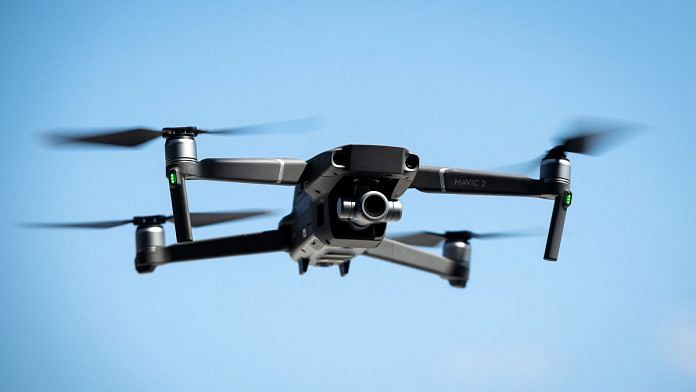RUCHIN SODHANI

Retired Lt Gen. H.S. Panag’s article — ‘High-tech drones could have neutralised Chinese intrusions at LAC’ — is unexceptionable in its lament. Only, it is more eloquent in what it fails to say than in what it does. The article, while critiquing the Indian Army’s neglect of a powerful piece of battlefield technology, echoes the very misperceptions that prevent the Army from embracing technology in any meaningful way.
It appears that when the Army’s institutional brain thinks of technological advancement, it imagines a patchwork of the latest battlefield systems that can easily be unpacked and deployed in battle. These systems are expected to be delivered by a manufacturer, foreign or domestic, in a ready-to-use condition. All that the Army would need to do is train its personnel in the system’s operation and maintenance.
That is simply not how technology works. Not anymore. Let’s take a closer look at the drone technology that the article speaks about to understand why this is so. Lt Gen. Panag presupposes – correctly – that any large-scale use of drones will be AI or Artificial Intelligence-enabled.
The question he does not ask is this: Where will this AI come from? Talking of which, what is AI?
AI needs continuous data
AI is not a fully functional artificial brain that can be implanted into any system. It is a computer programme that must be trained on massive amounts of relevant data: millions of visual, acoustic, electronic, thermal signatures of enemy entities, terrain and meteorology data of potential battlefields and the like. This data will run into terabytes and cannot be summoned by fiat. It is specific to different battlefield conditions, and must be painstakingly collected over time, analysed and labelled, made machine-readable and then carefully introduced with a substantial margin for error.
For perspective, look at the development of autonomous driving systems. Even in advanced countries with orderly traffic conditions, fully autonomous systems have not been deployed because the variables are far too numerous for the AI engine to handle. A battlefield would be messier by many orders of magnitude.
Then, after the AI has been ‘trained’ and deployed, the data received from operational platforms on the battlefield will need to be fed back into the same AI for it to sharpen itself by correcting its own errors and biases. That cannot be done manually, by staff officers scribbling away in their notepads and hopping around to put pins and ribbons on giant, wall-sized maps.
Tech is not an event, it’s a process
Where, then, will all this data come from for ‘creating’ the battlefield AI?
The obvious backward induction leads us to a fully networked battlefield management system, ready to take advantage of even newer developments like the Internet of Things (IoT). Remember the news reports about China laying fibre optic cables right up to its forward defences? China reportedly refuted the claims. But the cables were probably not meant for late-night calls back home.
Armies with ambitions of fighting modern wars against capable adversaries have such systems. The Indian Army doesn’t. It had one under development for a long time, but it was shelved sometime in 2018. No future plans have been heard of.
There are no apparent signs within the Army of an understanding that deployment of high technology is not an event. It is a process of incredible complexity requiring perseverance and genuine intent. The leadership of an organisation needs to be mentally and intellectually geared towards the very inception and development of this process, not merely its adoption. Consultants and other external agencies are only enablers on the road to tech nirvana; they can’t get you there by themselves.
Such a technological transformation would straddle both war and peace. After all, it is the same organisation that trains in peace and fights in war, with significant overlap between both. It cannot be communicating through reams of paper produced by hordes of clerks, signing documents in triplicate and pentaplicate in peace and hoping all the time to transform into a fully networked fighting machine in war.
More than a stopgap
This process of transformation to an AI-driver military can only happen if it is a command function in the true sense. Delegating it to some obscure directorate whose director general is just one more voice in the wilderness will help no one. Ergo, the senior-most commanders will need to drive it.
When might that happen? That is anybody’s guess. Right now, even relatively junior officers at the unit level have little exposure to, or understanding of, technology at the organisational scale. The senior ones, steeped in practices of the past and quite self-satisfied, are probably located further behind on the curve.
The starting points on this technological journey could probably be education and humility.
So, while the Army should by all means go ahead and deploy high-tech drones on a turbulent border, no one should imagine it will be a step towards creating a high-tech army. It should be seen for what it is – a desperate stopgap with very limited meaning in the Army’s evolutionary perspective.
Technological change for a massive army is nowhere akin to buying swanky gadgets, unpacking them and clicking away with abandon. It is a long-drawn, super high stakes battle in itself. The Indian Army seems to have lost much time and ground in this battle. Hopefully, recent developments will provide some impetus for it to get moving.
No comments:
Post a Comment